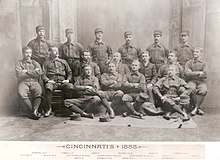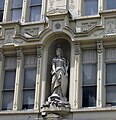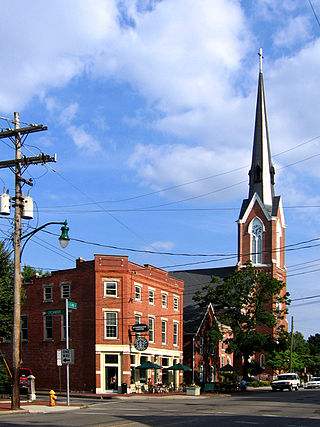
German Village is a historic neighborhood in Columbus, Ohio, just south of the city's downtown. It was settled in the early-to-mid-19th century by a large number of German immigrants, who at one time comprised as much as a third of the city's entire population. It became a city historic district in 1960 and was added to the National Register of Historic Places in 1974, becoming the list's largest privately funded preservation district, and in 2007, was made a Preserve America Community by the federal government. In 1980, its boundaries increased, and today it is one of the world's premier historic restorations.

Findlay Market in historic Over-the-Rhine, Cincinnati, Ohio, is the state's oldest continuously operated public market. The Findlay Market Building was listed on the National Register of Historic Places (NRHP) on June 5, 1972. The market is the last remaining of the nine that once served Cincinnati. In 2019 Newsweek named it one of the top ten public markets in the world.
Hudepohl Brewing Company is a brewery established in Cincinnati, Ohio in 1885 by founder Ludwig Hudepohl II. Hudepohl was the son of Ludwig Hudepohl who emigrated from Malgarten, Kingdom of Hannover, in 1838. Ludwig II had worked in the surgical tool business before starting his brewery. Hudepohl combined with Schoenling Brewing Company in 1986. Today, the Hudepohl-Schoenling Brewing Company is a wholly owned subsidiary of Christian Moerlein Brewing Company.
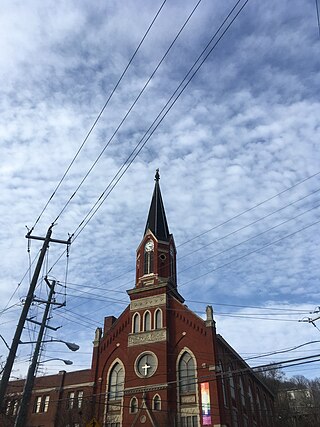
Philippus United Church of Christ is located on the northwest corner of West McMicken and Ohio Avenues, in the Over-the-Rhine neighborhood, in Cincinnati, Ohio. The church is a landmark because of a gilded hand, with its index finger pointing to the heavens, on its tall steeple. The church is an outgrowth of the now-defunct St. Matthews German Evangelical Church at Elm and Liberty Streets, which was a stronghold of "Free" Protestantism. Free Protestantism was very strong in Cincinnati at that particular time. Philippus Church is a red brick church completed in 1891. The church features Gothic Revival-style details. Recessed pointed-arch windows flank the gabled pointed-arch entrance and projecting tower with its rose window. Membership was large from the beginning.

The Hamilton County Memorial Building, more commonly called Memorial Hall, is located at Elm & Grant Streets, in Cincinnati, Ohio. The building is next to Cincinnati's Music Hall and across from Washington Park in the Over-the-Rhine neighborhood. It was built by the Grand Army of the Republic and Hamilton County in 1908, as a memorial to the military of the city and county. The building was built in the Beaux-Arts style. The building, including the Annie W and Elizabeth M Anderson Theater, is used for over 300 events per year.

The former Nast Trinity United Methodist Church, now known as The Warehouse Church, is a historic congregation of the United Methodist Church in Cincinnati, Ohio, United States. Designed by leading Cincinnati architect Samuel Hannaford and completed in 1880, it was the home of the first German Methodist church to be established anywhere in the world, and it was declared a historic site in the late twentieth century.
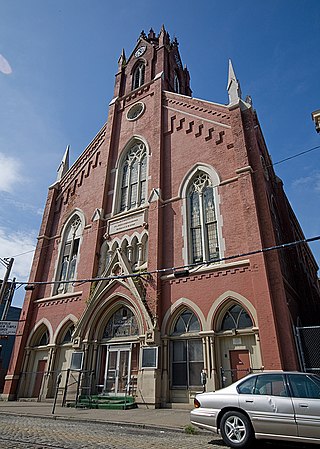
The Apostolic Bethlehem Temple Church is a historic church building in the Over-the-Rhine neighborhood of Cincinnati, Ohio, United States. A German Gothic Revival structure built in 1868, it was constructed as the home of the German Evangelical and Reformed Church, Cincinnati's oldest German Reformed Church. Founded in 1814, the church changed its name to "St. John's German Protestant Church" in 1874, although it remained in the German Reformed Church. This situation continued until 1924, when it departed for the American Unitarian Association and changed its name to "St. John's Unitarian Church." Little more than twenty years later, the congregation abandoned its old building, leaving it vacant until it was purchased by the present owners, a Pentecostal church.

Pendleton is one of the 52 neighborhoods of Cincinnati, Ohio. It is located within the city's urban basin. The population was 1,088 as of the 2020 census.

West End is one of the 52 neighborhoods of Cincinnati, Ohio. Originally a large residential neighborhood, the majority of the area was demolished in the mid-20th century for the construction of highway interchanges and an industrial park known as Queensgate. The population was 6,824 at the 2020 census.

The Connector is a streetcar system in Cincinnati, Ohio, United States. The system opened to passengers on September 9, 2016. The streetcar operates on a 3.6-mile (5.8 km) loop from The Banks, Great American Ball Park, Paycor Stadium, and Smale Riverfront Park through Downtown Cincinnati and north to Findlay Market in the northern edge of the Over-the-Rhine neighborhood. Future extensions have been proposed to the Uptown area, home to the University of Cincinnati, the regional hospitals on Pill Hill, and the Cincinnati Zoo; and to Northern Kentucky.

Downtown Cincinnati is one of the 52 neighborhoods of Cincinnati, Ohio. It is the central business district of the city, as well the economic and symbiotic center of the Cincinnati metropolitan area. Originally the densely populated core of the city, the neighborhood was transformed into a commercial zone in the mid-20th century. The population was 5,835 at the 2020 census.
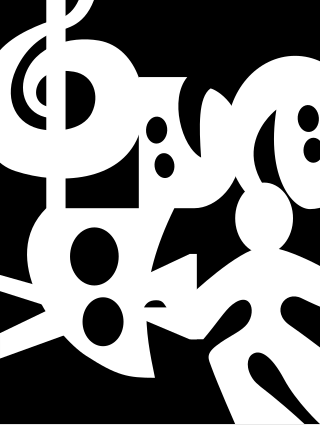
The School for Creative and Performing Arts (SCPA) is a magnet arts school in Cincinnati in the US state of Ohio, and part of the Cincinnati Public Schools (CPS). SCPA was founded in 1973. Of the approximately 350 arts schools in the United States, SCPA is one of the oldest and has been cited as a model for both racial integration and for arts programs in over 100 cities.

Cincinnati Center City Development Corporation (3CDC) is a private, non-profit real-estate development and finance organization focused on strategically revitalizing Cincinnati's downtown urban core in partnership with the City of Cincinnati and the Cincinnati corporate community. Its work is specifically focused on the central business district and in the Over-the-Rhine (OTR) neighborhood. The organization is widely credited with revitalizing OTR, which during the early 2000s was considered one of the most dangerous neighborhoods in the United States. While the organization began as a full-service real estate developer, it has since branched out and become a significant event programmer in Cincinnati, producing over 1,000 events per year at the four civic spaces it manages: Fountain Square, Washington Park, Ziegler Park and Memorial Hall.
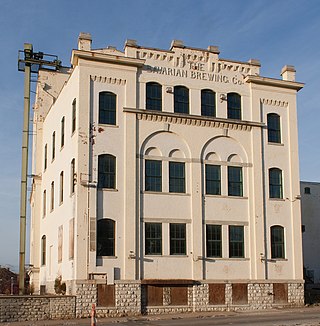
Bavarian Brewing Company was a brewery established in Covington, Kentucky, in 1866 by Julius Deglow, but became known as the Bavarian Brewery around 1870. The brewery was originally located on Pike Street, but expanded to 12th Street within a decade. After John Meyer acquired the brewery in 1881, he sold an interest to William Riedlin in 1882. The company operated under the proprietorship of Meyer & Riedlin starting in 1884, before becoming incorporated as the Bavarian Brewery Co. in 1889 by William Riedlin. The company was family owned until it was acquired by International Breweries, Inc.(IBI) in 1959. However, it operated as the Bavarian Division of IBI and continued to produce its flagship beer, Bavarian's, until the facility closed in 1966. The property was placed on the National Register of Historic Places and renovated as a multipurpose complex for food, beverage and entertainment uses in 1996. It operated as the Brew Works at the Party Source and Jillian's, but closed in 2006. The former structure containing the Brew and Mill Houses, built in 1911, was repurposed into office space becoming part of the Kenton County Government Center, opening in 2019. This office complex has a Bavarian Brewery Exhibit and it is accompanied by a Bavarian Brewery website.
The history of Over-the-Rhine is almost as deep as the history of Cincinnati. Over-the-Rhine's built environment has undergone many cultural and demographic changes. The toponym "Over-the-Rhine" is a reference to the Miami and Erie Canal as the Rhine of Ohio. An early reference to the canal as "the Rhine" appears in the 1853 book White, Red, Black, in which traveler Ferenc Pulszky wrote, "The Germans live all together across the Miami Canal, which is, therefore, here jocosely called the 'Rhine'." In 1875 writer Daniel J. Kenny referred to the area exclusively as "Over the Rhine". He noted, "Germans and Americans alike love to call the district 'Over the Rhine'."

Christian Moerlein Brewing Co. is a private beer company that began production in 1853 in Cincinnati, Ohio, by German immigrant Christian Moerlein. Before closing its doors in 1919 as result of prohibition, Christian Moerlein was among the ten largest American breweries by volume. In 1981, the brand was revived by the Hudepohl Brewing Company as a "better beer" a precursor to the craft beer category and is considered a pioneer craft beer of the craft beer movement. In 1999, Hudepohl-Schoenling Brewing Co. sold out to a group of investors, a sale that included the Christian Moerlein craft beer brand.
St. Paulus Kirche is a former German Evangelical Protestant church located at the corner of 15th and Race Streets in the Over-the-Rhine historic district of Cincinnati, Ohio. It is one block from the headquarters of 3CDC which are located in Saengerhalle. Built in 1850, it is the oldest surviving Protestant church in the city and the second oldest church in Cincinnati.
Sangerhalle is a historic building in the Over-the-Rhine historic district of Cincinnati, Ohio situated at the corner of 14th and Race Streets across from Washington Park and Cincinnati Music Hall.

The Steps of Cincinnati refers to roughly 400 sets of city-owned steps in Cincinnati, Ohio, in the United States. The steps are an unusual and integral mode of transportation in the city. In addition to practical use, the steps offer recreational users exercise and serve as a scenic attraction to tourists.

Rhinegeist Brewery is a craft brewery and craft cidery based in Cincinnati, Ohio. The company also sells their ciders under the name Cidergeist, using an alternative apple-shaped skull logo. The brewery's 25,000 square feet (2,300 m2) taproom and production facility is located in Cincinnati's Over-the-Rhine neighborhood, and occupies the former, pre-Prohibition bottling plant of Christian Moerlein Brewing Co. Rhinegeist operates an additional shipping, storage and innovation brewing facility in Cincinnati's Camp Washington neighborhood.


